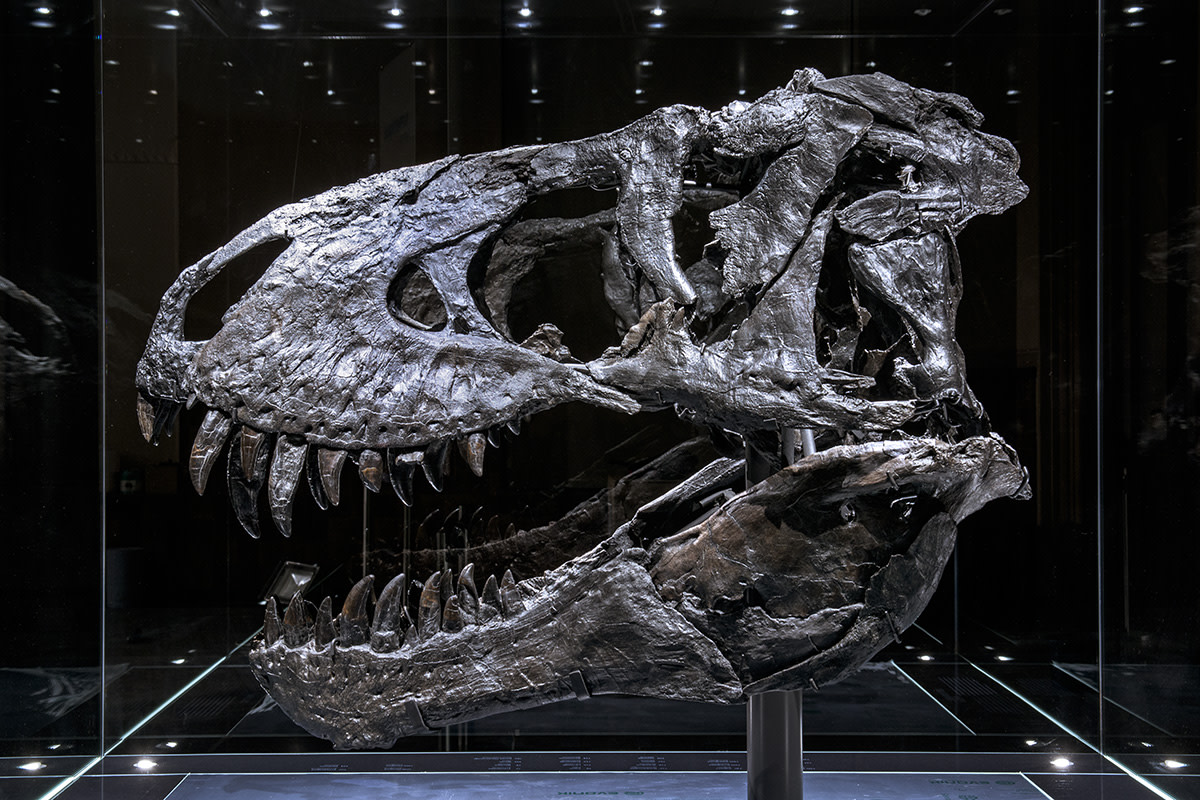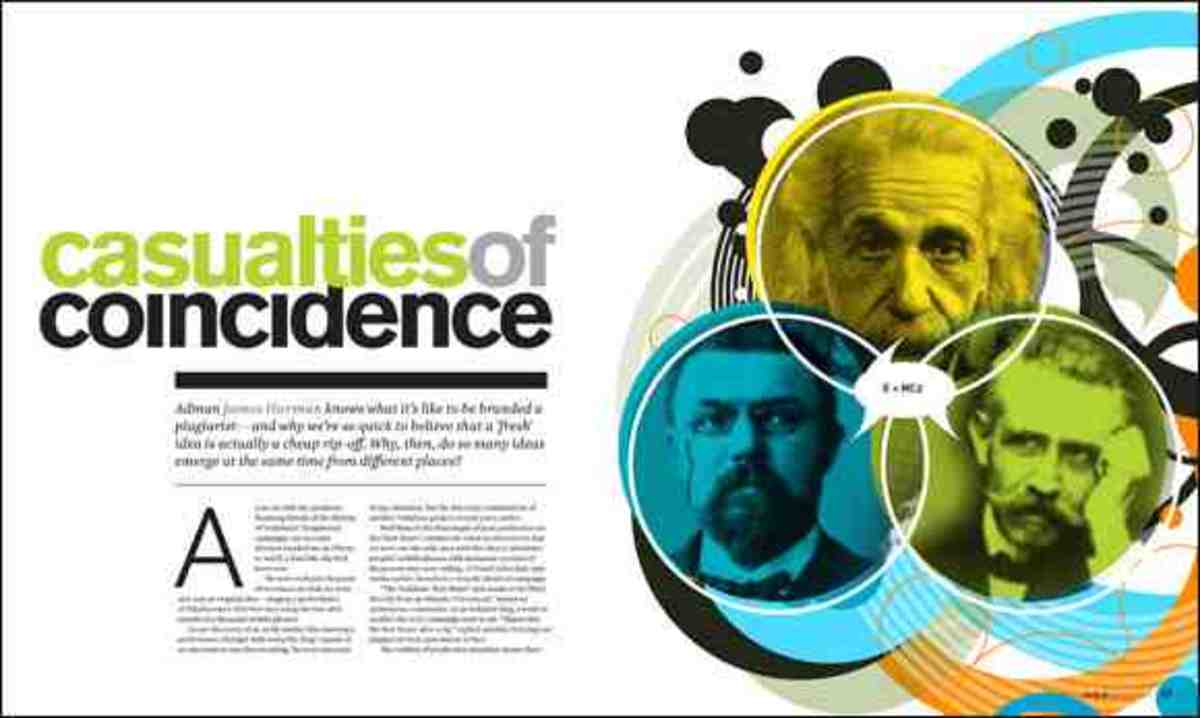Creepy Crystal Skulls Made Perfectly but How?
Crystal Skulls, no matter where their origins, are fascinating objects. They are cut in the shape of a human skull, vary in shape, size and type of glass or rock substance.Some are genuine, carved by the Mayans and other cultures, while the majority that we see today were carved recently.
The places where these objects have been found are generally located in Central America, especially in Aztec and Mayan ruins, although there have been news and rumors of possible findings in South America, but have not been confirmed.
Besides being surprised with the way they were carved, or the inability to determine how they came to be, there are claims that occur around such unexplained phenomena.
The best known of these skulls , and the most mysterious is the "Skull of Doom" or "Skull of Doom", discovered by Mitchell-Hedges.
It has features similar to that of a real human skull. So far we have not been able to determine the way it was carved, and it is an impossible job to do by the most gifted sculptors of any time.
Made of pure quartz crystal, both the mandible and the skull are from rock. Except for minor anomalies, is anatomically perfect, possibly representing a female skull due to its small size, 12.7 cm. high, while its weight is 5 kg.
Many prisms are located at the base, and hand-polished lenses of the eyes combine to produce an intense glow . The skull, perfectly carved in rock crystal, has a high degree of hardness, from which it follows that only by smelting ore and using a mold, or a laser could get anything similar. But the Maya did not possess sufficient expertise to tackle such an undertaking.
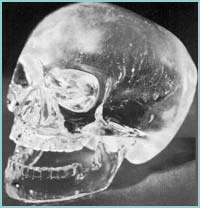
Surprising Findings
It was the British explorer FA Mitchell-Hedges, who claimed it was unearthed by his daughter, Anna, in 1924, during an expedition in the Maya ruins of Lubaantum, Belize, while searching for traces of Atlantis .
In 1970 the Mitchell-Hedges family gave the skull to Hewlett Packard Laboratories for their study, in which it was found that the glass was carved against the natural axis of the crystal, although modern sculptors would not even attempt this, because this can cause a broken piece of quartz, even using laser technology.
Another of the surprising findings was that no trace was found no evidence that metal tools were used. The skull was made of pure crystalline rock in the process of construction, generation after generation, comprised between 150 and 300 years.
Experts at the British Museum 's have traced it to the Aztec civilization, dating the origin to around 1300/1400 AD. However, the natives who accompanied the Mitchell-Hedges in Lubaantum (the place of the fallen stones), claimed that the "Skull of Doom" was more than 3,600 years old.
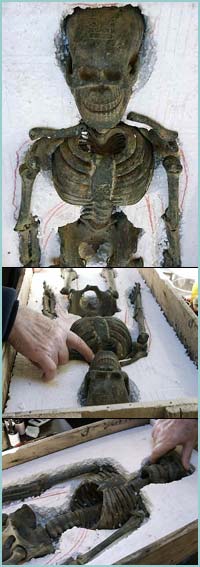
Two other crystal skulls are in the Museum of Mankind in London, England, and the Trocadero Museum in Paris, France. Both were found by soldiers in Mexico during the 1890's, and are carved on pure quartz crystal, though not as elaborately as that of Mitchell Hedges.
The skull exhibited at the Museum of Mankind is considered the twin of Mitchell-Hedges, except for one thing.
The Mitchell-Hedges skull, in fact, has articulated jaw, like a real skull, while the British skull is called a fixed jaw. Researchers agree in saying that the two objects have been built by the same hands. The Museum of Mankind was purchased from Tiffany's, the famous New York jeweler, in 1898, for 120 pounds. Tiffany's executives were unable (or unwilling) to explain its origin.
Some 12 years later, the British Museum would attain possession of the skull. The arrival of the skull to the British Museum, coincided with a series of strange happenings.
According to witnesses, sudden movements of objects or sudden invasions of smells of different perfumes, said the cleaning staff of the museum in the night, who fed beliefs that the skull was attributed to occult powers. These stopped when they got the skull covered by a heavy cloth during the night.
The anthropologist Morant made a comparative study of two skulls, reaching conclusions that are not shared by other scholars. Morant recorded that both were similar in many anatomical details, even claiming that, by the way, both were modeled on the skull of a woman, and were representations of the same skull and that one was a copy of the other--that of the first Mitchell-Hedges.
In 1950, the British Museum skull was re-examined and such examination it was discovered that the skull had its origin in Mexico, which dated from 1400 to 1500 AD and what the material was Brazilian quartz.
A third crystal skull above the The Musée de l'Homme in Paris, identical in style to the other two but of smaller dimensions, can provide information of particular interest.
Museum experts say that it was part of a "magic wand" Aztec thirteenth or fourteenth century AD, and was used to ward off snakes and foresee the future. It has a hole that runs through from top to bottom (supposedly made by a Christian group to place a cross in it) and the style, shape and cut are similar to other skulls found in various ruins in Mexico.
There are countless hypotheses about the real origin of the skulls, reaching some to believe that the legacy may be higher or extraterrestrial intelligence.
The most obvious answer is that the natives of Central America, Aztecs and Maya, carved for themselves, but this hypothesis does not explain the ways in which they were created, since none of these cultures, at least to our knowledge, possessed technology or knowledge to complete this work, unless you are using the technique of friction with sand, but that would be extremely cumbersome and costly and as we explained would require entire lives are devoted to such hard work because this method is would take between 150 and 300 years to attain such perfection.
In the many stories and beliefs that emerged around these rare pieces, and original powers of powers used in rituals in which, presumably, were used, are added many others ranging from the occult, paranormal and ufology.
The mystery of the skulls is also enriched by the legend which goes back to the Maya.
Such a legend says that in the world there are 13 crystal skulls to be re-discovered however, it warns that this will happen only when men are morally upright.
MAYAN
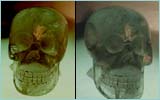
MAYAN: This skull is carved in quartz. Is 20.48 cm long 12.54 cm wide 10.79 cm high and weighs 3.95 kg. Belonging to an alleged "Maya Monk."
They say it was discovered in St. Augustine, Aczahuanthan, Department of Zacopa, Guatemala, in 1912 by one Hector Montano.
Paris
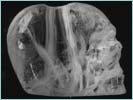
Skull exhibited in Paris: This skull is carved in quartz. Probably belongs to the XV century Aztec culture.
Mictlantccuhtli represents the "God of Death." Belongs to the Museum of The Homme in Paris, France.
ET
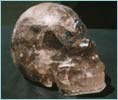
ET: Discovered in 1906 in Guatemala. It is smoky quartz. It is characterized by the pointed shape of the skull and jaw pronounced. Has a certain non-human look about him.
Today he belongs to an American collector.

